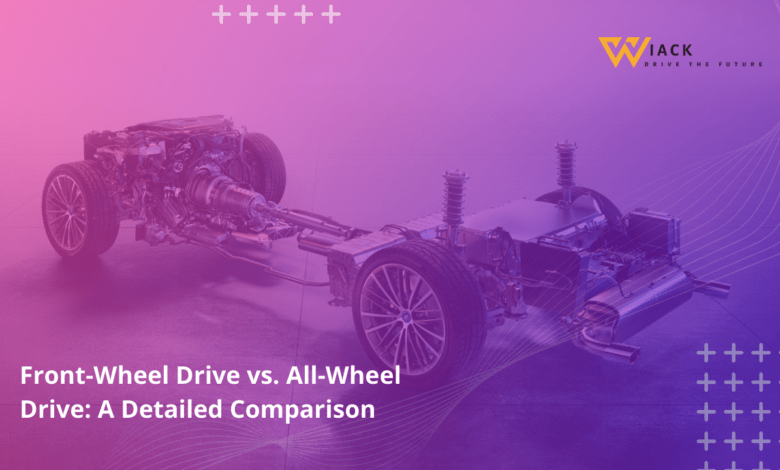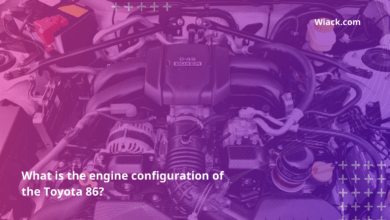Front-Wheel Drive vs. All-Wheel Drive: A Detailed Comparison

Did you know that over 60% of new vehicles sold in the United States are equipped with front-wheel drive? This surprising statistic highlights the popularity of front-wheel drive systems, but it also raises questions about the advantages and disadvantages of different drive system options. In this comprehensive guide, we’ll explore the key differences between front-wheel drive (FWD) and all-wheel drive (AWD), helping you make an informed decision when choosing your next vehicle.
Front-Wheel Drive
Front-wheel drive is a vehicle traction system where the engine powers the front wheels of the car. This design has become increasingly popular among automobile manufacturers due to its numerous benefits for everyday drivers. Let’s dive into the advantages and disadvantages of FWD systems.
Advantages of Front-Wheel Drive
Lower Purchase Price
One of the most significant benefits of FWD vehicles is their lower initial cost. Because the drivetrain components are concentrated in the front of the car, FWD vehicles are simpler and less expensive to manufacture. This cost savings is often passed on to consumers, making FWD cars more affordable than their AWD counterparts.
For example, when comparing similar models with different drive systems, you might find that the FWD version is $1,000 to $3,000 less expensive than the AWD option. This price difference can be substantial, especially for budget-conscious buyers.
Better Fuel Economy
FWD vs AWD fuel efficiency is another area where front-wheel drive often comes out on top. The simpler, lighter design of FWD systems typically results in better gas mileage. On average, FWD vehicles can achieve 2-5 mpg better fuel economy than comparable AWD models.
This improved fuel efficiency not only saves you money at the pump but also reduces your vehicle’s environmental impact. For drivers who prioritize eco-friendliness and lower operating costs, FWD is often the preferred choice.
Simpler Design and Maintenance
The concentrated design of FWD systems makes them easier to maintain and repair. With fewer components and a more straightforward layout, FWD vehicles often require less frequent maintenance and are generally less expensive to repair when issues do arise.
Auto repair shops typically charge less for FWD repairs due to the easier access to components and shorter labor times. This can lead to significant savings over the life of the vehicle, especially for older cars that may require more frequent repairs.
Lighter Weight
FWD vehicles are typically lighter than their AWD counterparts due to the absence of additional drivetrain components. This weight reduction contributes to improved fuel efficiency and can also enhance the vehicle’s overall performance, particularly in terms of acceleration and braking.
The weight difference between FWD and AWD versions of the same model can range from 100 to 300 pounds, which may seem small but can have a noticeable impact on the vehicle’s dynamics and efficiency.
More Affordable Tire Replacements
With FWD vehicles, the front tires typically wear out faster than the rear tires due to the additional forces of acceleration and steering. However, this uneven wear pattern can actually be an advantage when it comes to tire replacements.
Instead of needing to replace all four tires at once, as is often recommended for AWD vehicles, FWD owners can often replace just the front tires. This can result in significant cost savings over time, especially for drivers who put a lot of miles on their vehicles.
Disadvantages of Front-Wheel Drive
Limited Traction in Challenging Conditions
One of the main drawbacks of FWD is its performance in adverse weather conditions. When comparing FWD vs AWD in snow or other slippery surfaces, FWD vehicles often struggle to maintain traction. This is because the weight of the engine over the drive wheels can cause them to spin more easily when accelerating on low-friction surfaces.
While modern vehicle stability systems and traction control have improved FWD performance in these conditions, AWD still holds a significant advantage when it comes to all-weather capability.
Less Enjoyable Driving Experience in Dry Conditions
For driving enthusiasts, FWD can be less engaging than other drive systems. The FWD vs AWD handling characteristics differ significantly, with FWD vehicles prone to understeer (the tendency for the car to continue straight when turning) during aggressive cornering.
Additionally, powerful FWD vehicles can sometimes experience “torque steer,” a phenomenon where the car pulls to one side under hard acceleration. This can make the driving experience feel less precise and controlled, especially for those who enjoy spirited driving.
All-Wheel Drive
All-wheel drive is a vehicle traction system that can send power to all four wheels of a vehicle. This capability provides several advantages, particularly in challenging driving conditions. Let’s explore the pros and cons of AWD systems.
Advantages of All-Wheel Drive
Enhanced Traction in All Weather Conditions
The primary advantage of AWD is its superior traction in various weather conditions. When comparing FWD vs AWD in snow, rain, or on icy roads, AWD systems consistently outperform their FWD counterparts. This is because AWD can distribute power to the wheels with the most grip, reducing the likelihood of wheel spin and loss of control.
Many vehicle safety experts recommend AWD for drivers who frequently encounter adverse weather conditions. The improved traction can provide added peace of mind and potentially reduce the risk of accidents in slippery situations.
Improved Handling and Stability
AWD systems contribute to better overall vehicle stability and handling. By distributing power to all four wheels, AWD can help maintain better control during cornering and sudden maneuvers. This can be particularly beneficial in emergency situations where quick, precise control is crucial.
The FWD vs AWD handling difference is most noticeable during acceleration out of corners, where AWD vehicles can put power down more effectively without losing traction.
Faster Acceleration
AWD vehicles often boast quicker acceleration times compared to their FWD counterparts. This is because AWD systems can more effectively transfer power to the ground, especially from a standing start. The ability to utilize all four wheels for acceleration can result in 0-60 mph times that are several tenths of a second faster than equivalent FWD models.
This performance advantage is one reason why many high-performance and luxury vehicles utilize AWD systems.
Higher Resale Value
Vehicles equipped with AWD often command higher resale values than their FWD counterparts. This is due to the perceived benefits of AWD and its desirability among used car buyers, particularly in regions with harsh winters or varied terrain.
According to some consumer reports on drive systems, AWD vehicles can retain 5-10% more of their value over a five-year period compared to FWD models. This higher resale value can help offset the initial higher purchase price of AWD vehicles.
Disadvantages of All-Wheel Drive
Higher Purchase Price
One of the most significant drawbacks of AWD is the higher initial cost. When comparing FWD vs AWD cost, AWD systems typically add $1,500 to $3,500 to the price of a vehicle. This price premium can be a deterrent for budget-conscious buyers who may not need the additional capabilities of AWD.
It’s important to consider whether the benefits of AWD justify the higher cost based on your specific driving needs and conditions.
Lower Fuel Economy
AWD systems generally result in lower fuel efficiency compared to FWD vehicles. The additional weight of the AWD components and the energy required to power all four wheels contribute to increased fuel consumption. On average, AWD vehicles may see a 1-3 mpg decrease in fuel economy compared to their FWD counterparts.
For drivers who prioritize fuel efficiency or have long daily commutes, this difference in fuel economy can add up to significant additional costs over time.
More Complex Design and Maintenance
AWD systems are more complex than FWD, with additional components such as center differentials, transfer cases, and extra driveshafts. This complexity can lead to higher maintenance costs and potentially more expensive repairs when issues arise.
Car maintenance guides often recommend more frequent fluid changes and inspections for AWD vehicles to ensure proper operation of all components. These additional maintenance requirements can increase the overall cost of ownership over the life of the vehicle.
Potential for Increased Cabin Space Limitations
In some vehicle designs, the addition of AWD components can impact interior space. The need to accommodate additional drivetrain parts may result in a higher floor in the passenger compartment or reduced cargo space. While this is not an issue in all AWD vehicles, it’s something to consider, especially if interior space is a priority for you.
Less Suitable for Off-Road Driving
While AWD provides better traction than FWD in most conditions, it’s important to note that AWD is not the same as four-wheel drive (4WD). AWD systems are primarily designed for on-road use and may not provide the same level of capability in serious off-road situations as dedicated 4WD systems.
For drivers who require true off-road capability, a 4WD system with low-range gearing and more robust components may be a better choice than a typical AWD setup.
Key Takeaways
After exploring the pros and cons of both drive systems, let’s summarize the key points to help you determine which option might be best for your needs.
Front-Wheel Drive is Ideal for:
Drivers seeking affordability and fuel efficiency
If your primary concerns are keeping costs low, both in terms of initial purchase price and ongoing fuel expenses, FWD is likely the better choice. The simpler design and lighter weight of FWD vehicles make them more affordable and fuel-efficient in most cases.
Drivers who primarily drive in good weather conditions
For those living in areas with mild climates and who rarely encounter challenging road conditions, the traction advantages of AWD may not justify the additional cost and complexity. FWD vehicles perform admirably in most everyday driving situations.
All-Wheel Drive is Ideal for:
Drivers who prioritize traction and safety in challenging weather conditions
If you frequently drive in snow, rain, or on slippery roads, the enhanced traction provided by AWD can offer significant safety benefits. The ability to maintain better control in adverse conditions is a key selling point for many AWD buyers.
Drivers who value enhanced performance and handling
For those who enjoy spirited driving or require better acceleration and handling capabilities, AWD often provides a more engaging and capable driving experience. The improved traction and stability can make a noticeable difference in vehicle dynamics.
Drivers who expect to resell their vehicle in the future
If you plan to sell your vehicle after a few years of ownership, the higher resale value of AWD vehicles can help offset the initial higher purchase price. This can be particularly beneficial in regions where AWD is highly valued in the used car market.
Choosing the Right Drive System
When deciding between FWD and AWD, consider the following factors:
Factors to Consider:
Driving Conditions
Evaluate the typical weather and road conditions in your area. If you frequently encounter snow, ice, or heavy rain, AWD may provide valuable benefits. For those in milder climates, FWD may be sufficient for most driving needs.
Budget
Consider both the initial purchase price and long-term ownership costs. While AWD vehicles are typically more expensive upfront and may have higher maintenance costs, they can also offer better resale value. Weigh these factors against your budget and financial goals.
Resale Value
If you plan to sell your vehicle in the future, research the resale values of FWD and AWD versions of the models you’re considering. In some markets, the higher resale value of AWD vehicles can help offset the initial price premium.
Driving Preferences
Think about your driving style and preferences. If you enjoy performance driving or want the most capable vehicle for various conditions, AWD may be worth the investment. For those who prioritize simplicity and efficiency, FWD could be the better choice.
Conclusion
The debate between front-wheel drive vs all-wheel drive is not a matter of one system being universally better than the other. Instead, each drive system offers unique advantages and disadvantages that cater to different driver needs and preferences.
Front-wheel drive excels in affordability, fuel efficiency, and simplicity, making it an excellent choice for budget-conscious buyers and those who primarily drive in favorable conditions. On the other hand, all-wheel drive offers superior traction, enhanced performance, and better resale value, making it appealing to those who prioritize capability and driving dynamics.
Ultimately, the best choice depends on your individual needs, driving conditions, and priorities. By carefully considering the factors we’ve discussed and consulting with automotive engineers or knowledgeable staff at car dealerships, you can make an informed decision that aligns with your lifestyle and preferences.
Remember, whether you choose FWD or AWD, modern vehicle traction control systems and advancements in tire technology have greatly improved the performance and safety of all vehicles. The most important factors in safe driving remain the driver’s skills, attention, and adherence to proper maintenance schedules.
As you embark on your car-buying journey, use this guide as a reference, but also don’t hesitate to seek advice from automotive forums, test drive different vehicles, and consult consumer reports on drive systems. By doing so, you’ll be well-equipped to choose the drive system that best meets your needs and ensures many miles of safe, enjoyable driving.
Get the latest car news, reviews, and prices at Wiack.com. Your one-stop destination for all things automotive.





